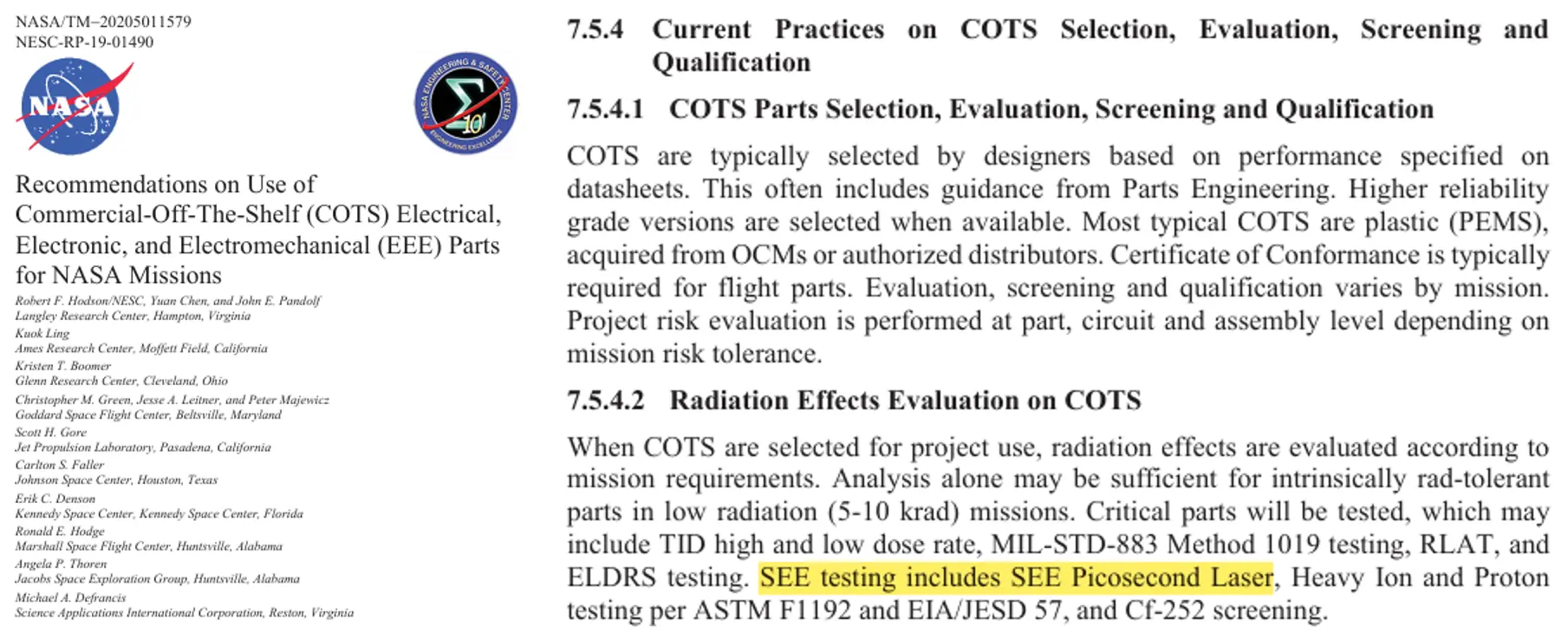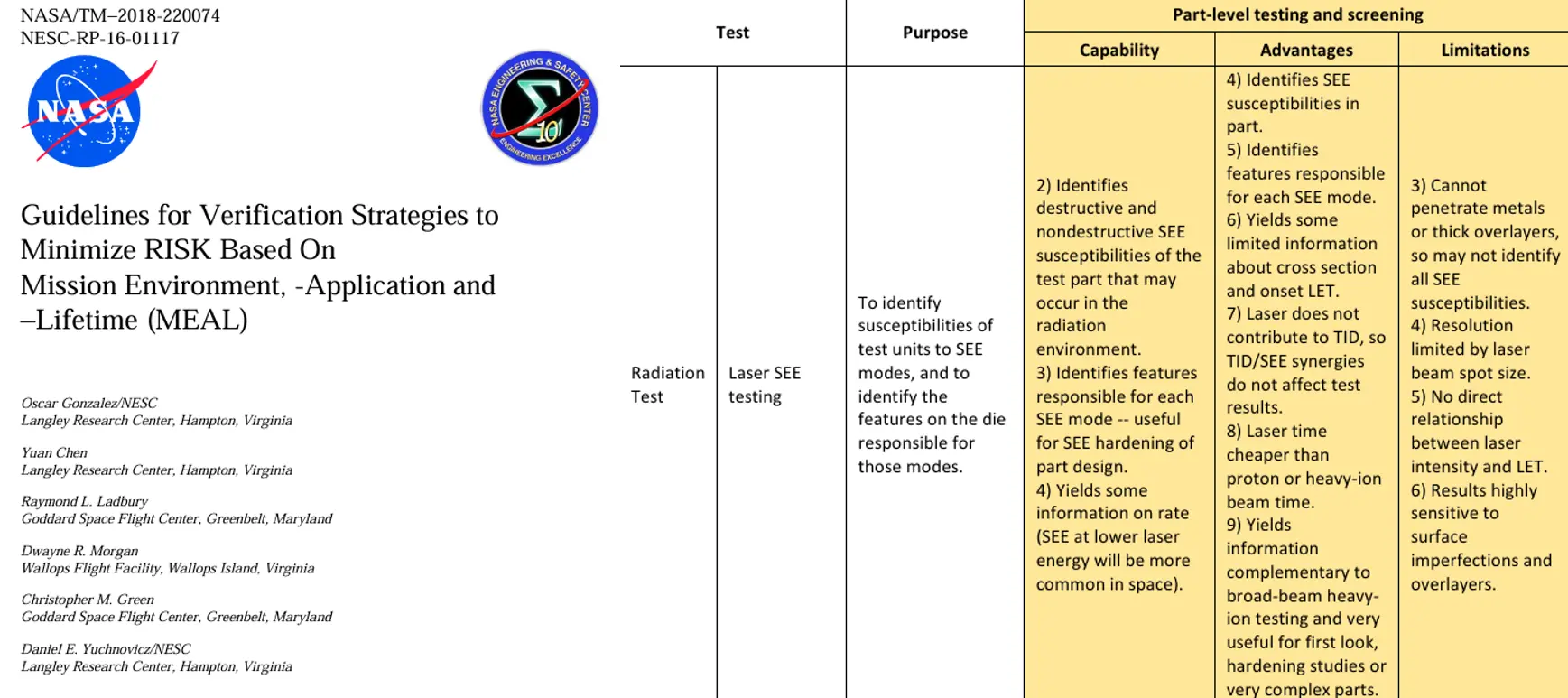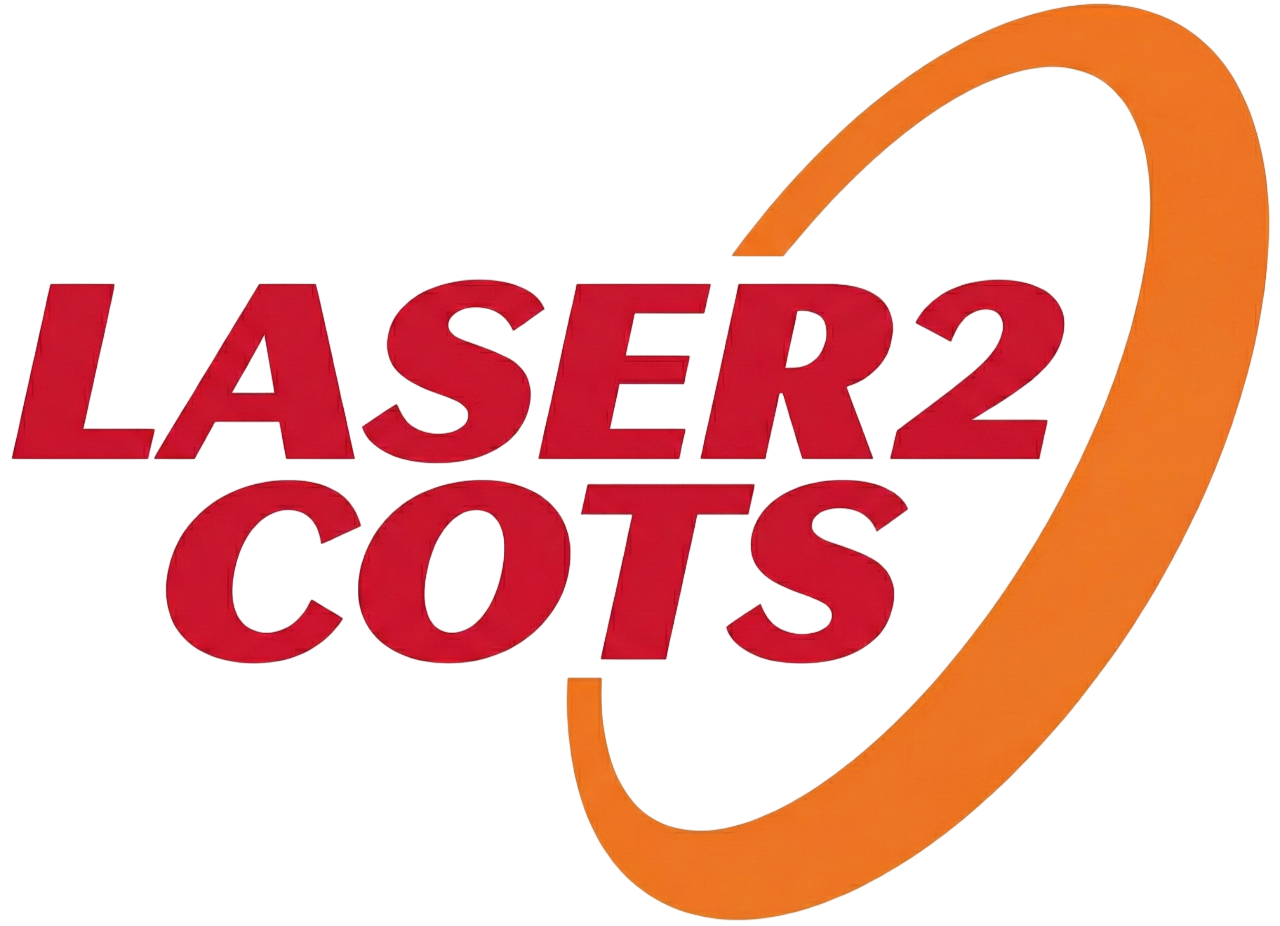Laser-based evaluation of single-event effects (SEE) has emerged as a practical complement-and in some cases an alternative-to heavy-ion beam testing for assessing the radiation hardness of semiconductor devices. It is used by NASA and affiliated research groups, as well as other organizations worldwide.
In the U.S., multiple NASA-associated laboratories conduct laser-based radiation evaluations. This approach is gaining traction thanks to rapid test turnaround and precise localization of vulnerabilities. Laser systems can pinpoint sensitive regions within circuits, enabling engineers to identify and mitigate SEE risks early in the design phase.
A key reference is NASA TM-20205011579, which provides recommendations on the use of COTS EEE parts in NASA missions. The memorandum includes laser-based SEE testing among its recommended evaluation methods-alongside picosecond-laser testing, heavy-ion and proton testing, and Cf-252 screening.
Rather than implying a priority order, the inclusion of laser methods underscores their growing role as part of a complementary test strategy for COTS parts.

NASA Recommendations on the Use of COTS EEE Parts (NASA/TM-20205011579)
Reference: NASA Engineering and Safety Center. (2020). Recommendations on Use of Commercial-Off-The-Shelf (COTS) Electrical, Electronic, and Electromechanical (EEE) Parts for NASA Missions (NASA/TM-20205011579, NESC-RP-19-01490). Langley Research Center.
Another relevant reference is the MEAL guideline-Mission, Environment, Application, and Lifetime (NASA/TM-2018-220074)-which discusses laser-based SEE evaluation as a viable radiation-test method.
The document notes the cost effectiveness and shorter evaluation time relative to traditional heavy-ion or proton testing, and emphasizes how laser testing provides complementary insight that can refine the results of conventional methods.
Laser evaluation is especially valuable for early-stage circuit assessments, radiation-hardness design studies, and densely integrated logic devices where precise fault localization is essential.

MEAL-Based Verification Strategy Guideline (NASA/TM-2018-220074)
Reference: NASA. Guidelines for Verification Strategies to Minimize Risk Based on Mission Environment, Application, and Lifetime (MEAL), NASA/TM-2018-220074, June 2018.
At QRT, we are advancing laser-evaluation technologies in line with these international practices. By correlating laser energy with LET (linear energy transfer), our evaluations can predict heavy-ion test outcomes and identify component-level SEE vulnerabilities with high precision.
Related Articles
- Why Laser Evaluation is Necessary (Cost Perspective)
- SPA vs TPA
- Analysis of Laser Evaluation Feasibility by Semiconductor Package Type
- Semiconductor Radiation Hardness Laser Evaluation (Laser Test)
- Comparison of Band Gaps and Optical Absorption Mechanisms of Semiconductor Substrates
- Strengths of QRT Laser Testing


